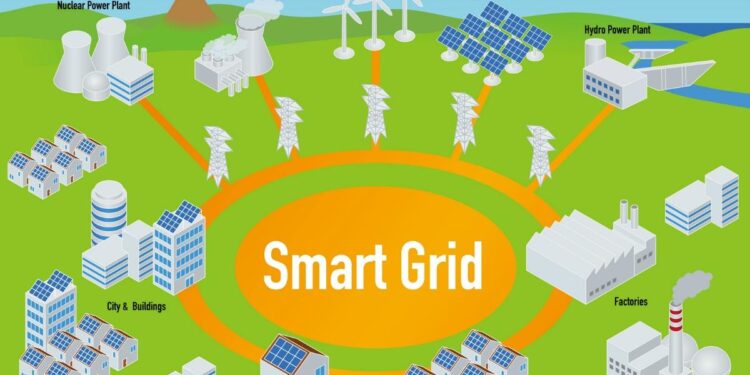Hungary is witnessing significant advancements in its electrical grid infrastructure as part of a broader push toward modernization and energy security. Recent developments highlight substantial investments and strategic projects aimed at enhancing grid capacity, reliability, and integration of renewable energy sources. This surge in grid upgrades marks a pivotal step in Hungary’s commitment to meeting growing energy demands and supporting the transition to a more sustainable energy future. In this article, we explore the key initiatives shaping Hungary’s power network and their implications for the country’s energy landscape.
Substantial Grid Developments Drive Hungary’s Energy Transition
Hungary is making significant strides in transforming its electricity grid to support a greener and more resilient energy system. Recent investments focus on modernizing existing infrastructure and integrating smart technologies that enhance grid stability and facilitate an increased share of renewable energy sources such as solar and wind power. These efforts are critical as the nation seeks to meet its climate targets while ensuring reliable electricity supply for both urban and rural areas. Enhanced cross-border connections with neighboring countries are also a key feature, enabling more efficient energy trading and grid balancing across the region.
Key projects underway include the deployment of advanced grid automation systems, expansion of high-voltage transmission lines, and upgrading substations with state-of-the-art equipment. Additionally, Hungary is prioritizing the installation of energy storage solutions to mitigate the intermittency of renewable generation. The table below outlines some of the flagship initiatives contributing to this transition:
| Project Name | Focus Area | Expected Completion | Capacity Impact |
|---|---|---|---|
| Smart Grid Budapest | Digital automation and monitoring | 2025 | +15% efficiency |
| North-South HV Link | High-voltage line expansion | 2026 | 1,200 MW |
| Storage Hub Pécs | Battery storage integration | 2024 | 500 MWh |
- Smart meters are being rolled out nationwide to enable real-time energy consumption tracking.
- Renewable integration platforms improve forecasting and grid management.
- Cross-border coordination enhances energy security within the Central European region.
Integration of Renewable Sources Poses New Challenges and Opportunities
As Hungary accelerates its shift towards sustainable energy, the incorporation of renewable sources such as solar, wind, and biomass into the national grid has revealed complex logistical and technical challenges. Fluctuations in energy generation due to weather variability demand advanced grid management systems and real-time data analytics to maintain stability and prevent outages. Moreover, the integration requires substantial investments in energy storage solutions and grid infrastructure upgrades to handle the intermittent nature of renewables without compromising supply security.
Key developments currently underway include:
- Implementation of smart grid technologies to optimize load balancing
- Expansion of battery storage capacity to smooth out energy delivery
- Enhanced cross-border electricity trade frameworks to leverage regional balancing
These efforts not only address operational challenges but also unlock new opportunities for Hungary to become a regional leader in clean energy innovation, fostering economic growth and energy independence in line with EU climate goals.
| Aspect | Current Status | Planned Upgrade |
|---|---|---|
| Renewable Capacity | 2.3 GW | 5.0 GW by 2030 |
| Storage Facilities | 50 MW | 250 MW by 2027 |
| Grid Automation | Limited | Widespread smart tech rollout |
Experts Recommend Enhanced Infrastructure Investment to Ensure Grid Stability
Leading energy specialists emphasize the critical need for Hungary to accelerate its investment in modernizing the electricity grid. With increasing integration of renewable energy sources and rising demand, the current infrastructure faces challenges that could impact both reliability and efficiency. Experts highlight the importance of upgrading transmission networks, implementing smart grid technologies, and enhancing energy storage systems to better manage supply fluctuations and prevent outages.
Key recommendations focus on:
- Deploying advanced sensors and automation to enable real-time grid monitoring and faster response times.
- Expanding cross-border interconnections to improve energy trade and stability within the Central European region.
- Prioritizing investments in decentralized energy resources to support local generation and reduce transmission losses.
| Investment Area | Expected Benefit | Timeline |
|---|---|---|
| Smart Grid Tech | Improved outage detection | 2024-2026 |
| Energy Storage | Supply-demand balancing | 2025-2028 |
| Cross-border Links | Regional grid resilience | 2024-2027 |
Future Outlook
As Hungary continues to advance its energy infrastructure, these substantial grid developments mark a significant step toward a more resilient and sustainable power system. With ongoing investments and modernization efforts, the country is positioning itself to meet growing demand and integrate renewable energy sources more effectively. Stakeholders across the sector will be closely watching how these upgrades influence Hungary’s energy landscape in the coming years.
















